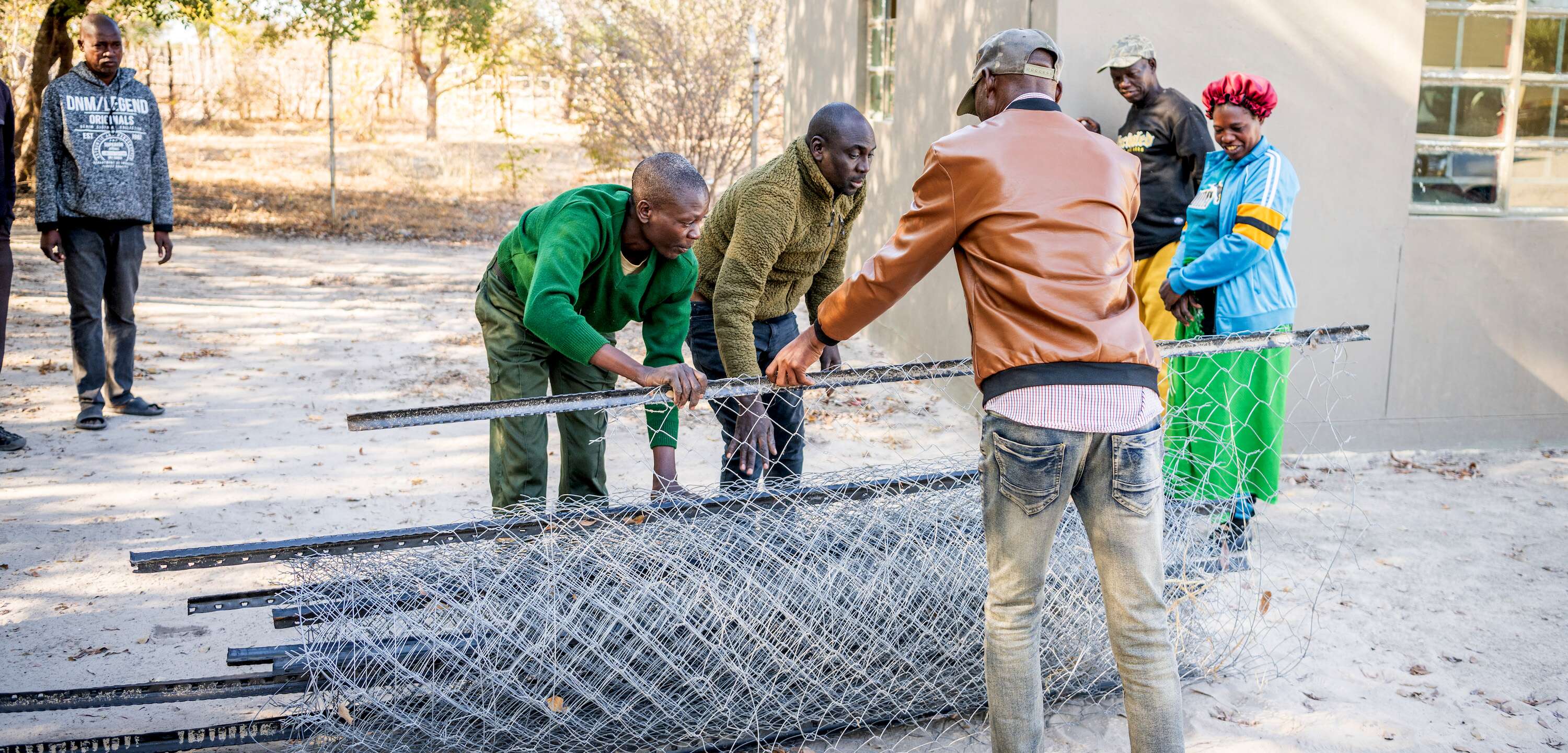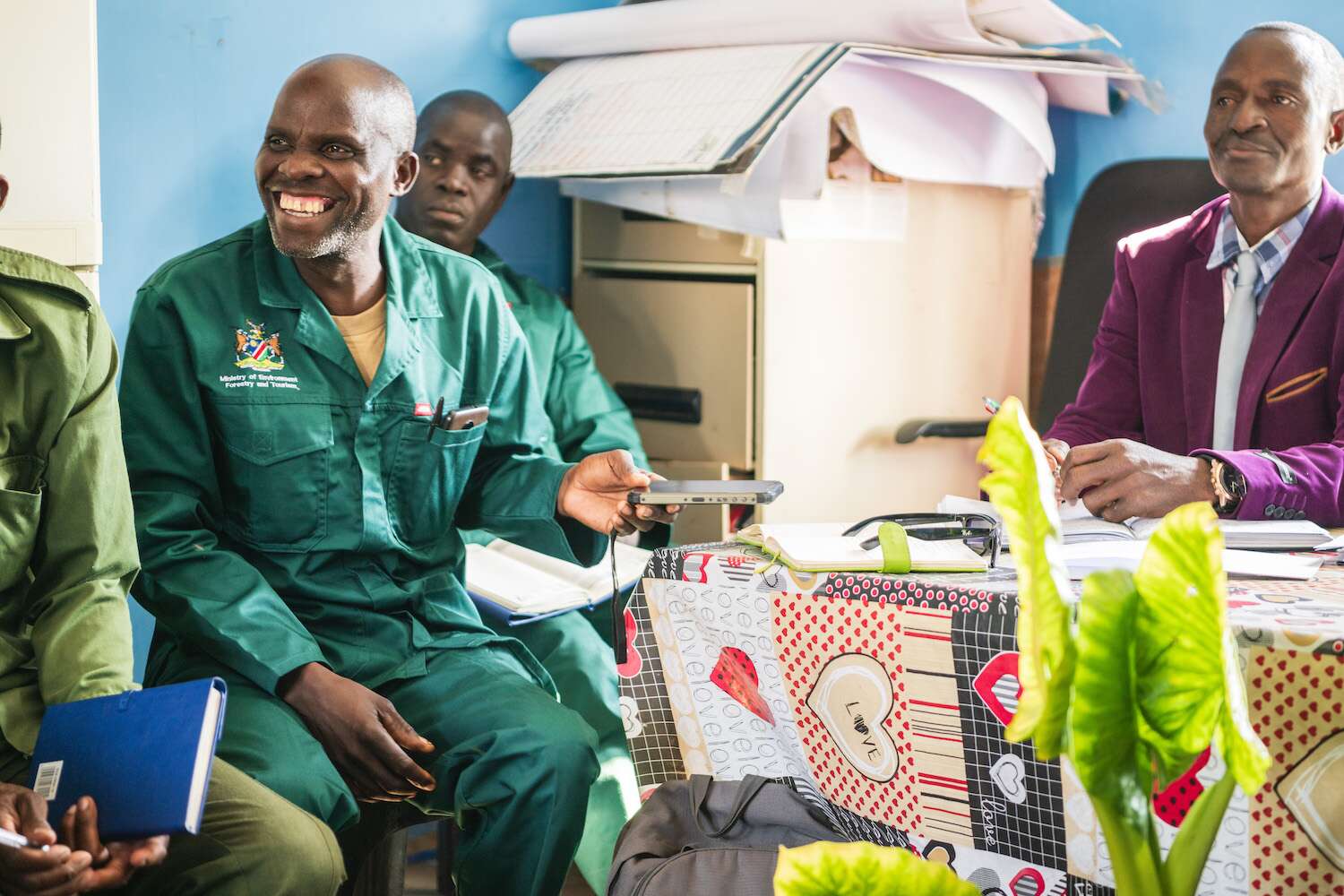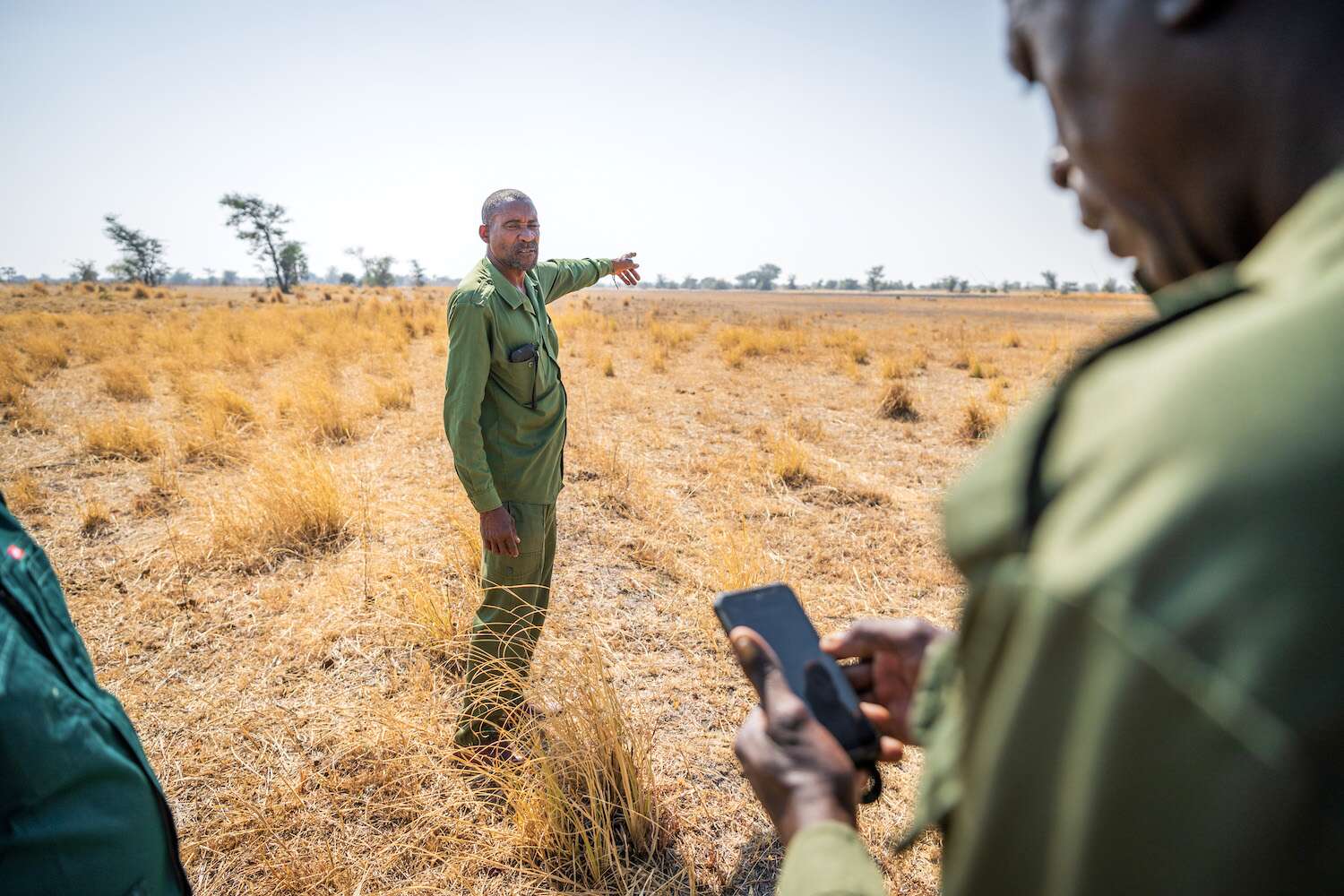
The Sustainable Wildlife Management Programme
Addressing Global Needs in a Local Context
28th October 2024
28th October 2024
When the Sustainable Wildlife Management (SWM) programme started in 2021, Namibia was coming out of its third devastating drought in eight years. Today, we are in our fourth, highlighting the need to support food security and promote wildlife conservation simultaneously – the main objective of the SWM programme.
The SWM programme is a global initiative involving 15 African, Caribbean and Pacific countries, funded by the European Union and the Agence Française de Développement Group with co-funding from the French Global Environment Facility. The Food and Agricultural Organisation (FAO) is the lead implementing agency globally, working with local partners in each target country and the relevant national government institutions.
In Namibia, this four-year initiative involves 13 community-based organisations, including 12 communal conservancies and the Kyaramaçan Association in Bwabwata National Park. It aims to strengthen community-led efforts to reconcile the conservation of wild species with food security while at the same time improving local livelihoods in the Kavango-Zambezi Transfrontier Conservation Area (KAZA). The programme is also being implemented in Botswana, Zambia, and Zimbabwe, as well as other KAZA member states (Angola will be included in the programme starting next year).
Mitigating Human Wildlife Conflict
Coexisting with wildlife is a constant challenge in communal conservancies, but it becomes even more difficult during drought years. With support from the SWM programme, George Mukoya and Muduva Nyangana conservancies revised their Human Wildlife Conflict (HWC) Mitigation Plans during a workshop in February 2024, improving their capacity to manage HWC and enhancing the positive perception of wildlife.

On a village level, predator-proof livestock enclosures (kraals), which provide safe havens for cattle at night and peace of mind for villagers, were constructed in Bamunu, Wuparo, and Salambala conservancies. Seventy-two 50-kg steel wire rolls for the assembly of elephant tin fencing were provided to nine conservancies in the Zambezi Region. The tins attached to the fences rattle when touched, helping to deter elephants from raiding crop fields.
Crocodile fences erected around certain spots in a river provide a crocodile-free area for people to access water and for children to swim safely. The SWM programme financed the construction of six crocodile fences in the Kwando Conservancy and two in Wuparo Conservancy, while materials for three more crocodile fences were provided to the Mashi Conservancy.
The SWM programme also invested in building human capacity. Quota-setting workshops were held to ensure that conservancies and their partners set sustainable quotas for the 2023-2025 period. More than 100 game guards from several conservancies, including Wuparo, Dzoti, Balyerwa, Mashi, Salambala, George Mukoya and Muduva Nyangana, were trained or retrained to report on HWC incidents using the SMART mobile app – replacing the paper system used until now.


Planting chillies around fields and burning chillies are known elephant deterrents that help to keep them out of villages and away from crops. Members of the Muduva Nyangana Conservancy were trained to make chilli bombs to help mitigate human-elephant conflict.
Income diversification and food security
Since most conservancy members' livelihoods are linked to subsistence agriculture and the use of natural resources, income diversification and food security are often intertwined.
In some conservancies, chilli production was applied to human wildlife conflict mitigation, while in others, it was piloted as a means of income diversification. With a willing chilli buyer identified, the programme supported the development of a value and supply chain for chilli production in Kwandu, Mashi, Balyerwa, and Wuparo (all in the Zambezi Region).
Community members from Muduva Nyangana and George Mukoya conservancies in Kavango East visited the Zambezi Region to learn more about chilli farming as an alternative income-generating activity as well as how to apply it around their crop fields to reduce elephant incursions. These two conservancies received additional training on conservation agriculture practices, including small stock management.


Game meat is recognised as an important part of the rural diet, and a resource that benefits communities when used sustainably. Conservancy members receive game meat as part of their conservancies' agreements with professional hunters, but it is difficult to keep this meat for long periods without refrigeration. The SWM programme therefore purchased three 95-litre solar powered freezers for the Kyaramaçan Association and trained 13 community members on how to use meat processing equipment. An additional twelve 650-litre freezers were procured and distributed to nine SWM-supported conservancies in the Zambezi Region, the two Kavango East conservancies and Nyae Nyae.
Other projects aimed at improving food security and diversifying livelihoods focused on domestic animals. In Dzoti Conservancy, several years of support in rangeland management and livestock production is now being expanded with development of a small feedlot to improve animal body condition prior to being sent to the Meatco Abattoir in Katima Mulilo. Finishing at feedlots increase the price received per animal, thus increasing the profits from livestock farming. A poultry production mentorship programme was supported in Bamunu, Kwandu, Mayuni and Mashi conservancies. In the Kavango communal conservancies, 72 community members (mostly women and youth) received training on goat management.
For over 10 years, devil's claw harvesting has been a consistent source of income for many conservancies, but the positive impact is being undermined by illegal and improper harvesting in Bwabwata National Park, where the Kyaramaçan Association is located. Incorrect harvesting practices kill the plant, whereas the correct practice does not and is therefore sustainable. SWM programme staff provided pre- and post-harvesting training to members of the Association to supervise harvesting activities and deter illegal harvesters.

Large landscape conservation
Recognising that the lives of rural communities and indigenous people are deeply connected to the health of the land, the SWM programme includes projects aimed at restoring natural ecosystems. The area covered is vast, and the pressures are varied and exacerbated by the impacts of climate change. However, the conservancy structure allowed for rapid rollout of interventions with a population of informed, involved citizens.
The SWM team in Namibia shared their knowledge from our conservancy system with colleagues across KAZA, particularly those in Botswana. Wild Entrust is implementing SWM with Habu village and other communities on the western boundary of the Okavango Delta. These communities aspire to establish community-run wildlife management areas, using lessons learned from the Namibian conservancy model.
In Namibia, the programme supported the Kwando Fish Survey, which provided evidence suggesting that the recently proclaimed fish reserve in Mayuni is an important spawning ground for fish. Salambala was supported in their efforts to gazette their first inland fisheries reserve, and two fish stock surveys for the Kwando River were conducted in 2023. These efforts help to protect and restore river ecosystem health, providing protein through sustainable fishing and income generation through sport fishing.
Several key wildlife corridors have been established in the Zambezi Region, allowing wild animals to move through the KAZA landscape more easily. The integrity of these corridors depends on local communities not settling or planting crops in these areas. To increase local understanding of the purpose and importance of these corridors, the SWM programme developed and distributed awareness materials in local languages. Furthermore, 11 conservancies were engaged in adaptive management consultations, whereby data on poaching, wildlife numbers and other metrics are used to guide management actions for the coming year.
In a similar effort to inform the wider community of wildlife management actions, a radio campaign was used to announce village-level consultations in Nyae Nyae Conservancy. These consultations laid out the zonation plan within the conservancy's Game Management Utilisation Plan, which indicates separate zones for human settlement and wildlife. Signage for the Wildlife Sanctuary Zone was installed to ensure that people on the ground know where the boundaries of this zone are located.
This is not the end: Sustaining our impact
Behind every number presented here is a face, a family, and a hope for the future. The impacts of these projects on these individuals are starting to be felt, and beginning to be trusted. Over the years, projects such as some of these have come and gone, leaving local people wondering if these efforts will last.
However, the SWM programme is not a one-off effort, as the conservancies and support organisations working in this landscape have been here for several decades. As this phase of support comes to an end, these partners will continue to work together and source new funding to sustain our positive impact for many more decades.
WWF Namibia is lead implementing partner of FAO for the Namibia component, working with three partners: Integrated Rural Development and Nature Conservation, Namibia Nature Foundation, and the NACSO Natural Resource Working Group. This programme is funded by the French Development Agency (AFD) with co-funding from the European Union through the SWM Programme. The Center for International Forestry Research and World Agroforestry, the French Agricultural Research Centre for International Development, and Wildlife Conservation Society are consortium partners.
For articles on similar topics, please click one of the following options:
For more great articles from Conservation Namibia see below...
Conservation Namibia brought to you by:
We use cookies to monitor site usage and to help improve it. See our Privacy Policy for details. By continuing to use the site, you acknowledge acceptance of our policy.











